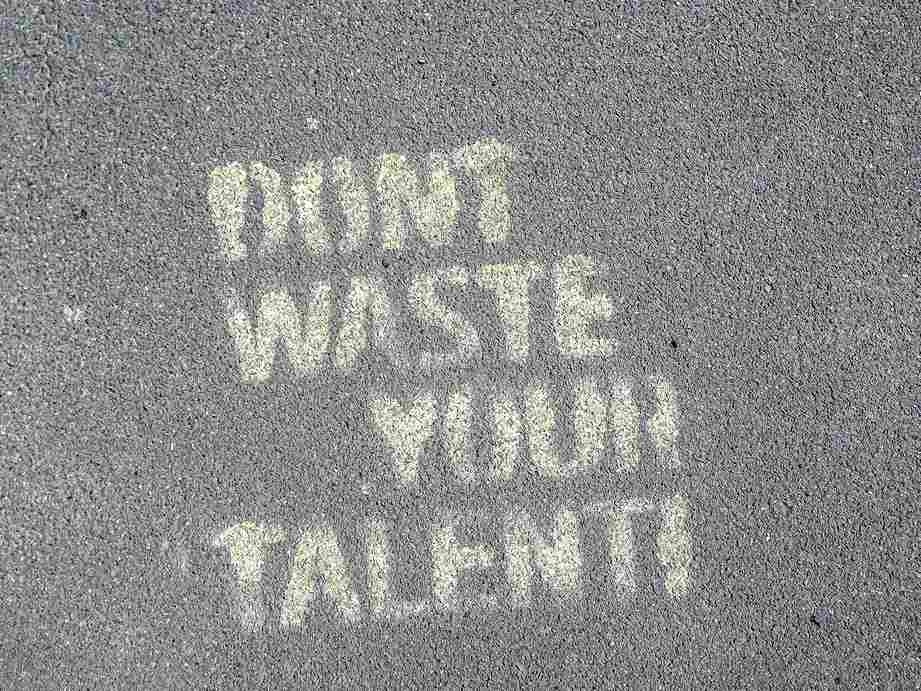Recruiting in a recession: How the economy (re)shapes the global talent market
Talent acquisition is tightly-knit to the state of the economy. During an (impending) recession or economic downturn, companies often tend to slow down hiring, implement hiring freezes or, resort to layoffs. So where does this leave talent attraction professionals?
Table of contents
In this article, we examine how the economy is set to (re)shape the global talent market in 2023, and what this means for you as a recruiter or hiring manager.
Not only will we analyse the intricacies of today’s talent market and the state of the economy, we’ll also draw comparisons between the current economic turmoil and previous downturns like the 2009 recession. How does now differ from then, and how will this impact talent acquisition specialists?
Most importantly, how can hiring professionals recruit, retain, and manage top talent in today’s turbulent economy? Let’s find out.
- Recruiting in a recession: Should you worry?
- Recessions and recruitment: Past and present
- How to recruit in a bad economy
- Talent attraction in 2023
Recruiting in a recession: Should you worry?
As we enter 2023, experts around the globe seem certain: We’re on the brink of a recession. And according to an article by The Economist’s Editor-in-Chief, Zanny Minton Beddoes, a global recession is even inevitable.
Combined with the volatile geopolitical climate and further woes, such as the energy crisis or the aftershocks of the pandemic, the time we live in is marked by uncertainty.
Logically, this reverberates through all facets of society, including recruitment and the global talent market. Investors are reluctant to provide large funding, companies consider freezes or layoffs, and employees resort to career cushioning to try to prepare themselves for what may come.
In a talent market characterised by hesitance and scarcity, you might wonder: Where does this leave me as a talent acquisition specialist?
Recessions and recruitment: Past and present
Luckily, if past economic downturns and societal turmoil has taught us anything, it’s that companies will still keep looking for qualified candidates, and talented professionals will always find their way to new opportunities.
The global economy (roughly) moves in consecutive cycles between economic expansion and economic recession. Economists define four stages within this business cycle:
- Expansion
- Peak
- Contraction
- Trough
As of early 2023, the global economy is somewhere between contraction and trough. But although we don’t yet know how long this will last, past experience dictates that a period of economic expansion will follow.
That’s why most business leaders won’t completely stop talent attraction. Rather, recruitment efforts will likely focus on pre-emptively sourcing talent and creating a recruitment strategy that’s ready for the economic impulse anticipated to arrive after the recession.
Suggested read: How to attract top talent to your company in 2023
The need for talent remains
Freezes and slowdowns aside, many companies keep hiring even during a recession. Some positions are simply non-negotiable when it comes to business success, and despite financial cuts, there will still be a budget for such critical roles.
In other cases, freezes on one side of the business can simply be a strategic decision to facilitate continued hiring and growth on another side of the business. Similarly, reorganisations can result in layoffs while simultaneously opening new positions that need to be filled.
For example, Google announced having to lay off 12,000 employees in January 2023, yet at the same time Google Careers had about a thousand job ads online.
So the good news is that there will likely remain a need for talent attraction in your business. The flip side is that these positions might prove to be some of the hardest roles to recruit for.
Firstly, the economic climate forces companies to tighten their grip and become more lean in the way they operate. More needs to be done with less. For recruitment, this means processes need to be quick and efficient to keep time to fill to a minimum.
Secondly, the roles that companies are still hiring for in an economic downturn tend to be senior, executive, and C-level roles. Such positions are more difficult to fill at the best of times, let alone when there’s a lot of internal pressure to succeed (while keeping processes lean). But there is still hope.
Optimistic prospects: Today’s recession and talent attraction
ManpowerGroup’s Employment Outlook Survey found that, despite a decline, the global Net Employment Outlook for the first quarter of 2023 is still at 23% (down 6% compared to the previous quarter, 14% compared to last year). This means that 23% of employers still intend to actively attract and hire new employees, despite the economic uncertainties.
This is one of the indicators that, despite layoffs and freezes at certain companies and industries, the global talent market as a whole is not expected to stagnate.
This optimistic outlook is likely related to the trouble employers faced after the COVID-19 pandemic. Apart from difficulties in getting employees back to the office, they also struggled to attract new talent and refill positions left vacant during the pandemic.
Furthermore, the global talent market is still incredibly tight, with labour shortages in dozens of sectors still causing headaches for companies, hiring managers, and recruiters alike.
If these issues have taught talent acquisition professionals (and business leaders) anything, it’s to ensure retention of existing employees and to always be on the lookout for the next great candidate. In today’s recruiting space, you can’t afford to let skilled talent slip away. And that’s good news for recruiters.
Because a conclusion we can draw from all this is that recruiting in a recession isn’t just possible, but vital. In fact, talent acquisition professionals are likely to grow further in importance as they help businesses survive the recession and thrive once it’s over.
How to recruit in a bad economy
Below, we’ll highlight four key aspects of managing talent in a turbulent economy and continuing to hire in the recession to come.
Some points draw parallels between past economic downturns and what we can likely expect again. Others function as general best practices to weather the storm to come.
Focus on securing the most important talent
As mentioned, much of your talent attraction efforts are likely to focus on highly skilled talent and leadership positions. And this is often a good approach in times of a flailing economy. In fact, it was one of the main approaches business leaders took during the 2009 economic crisis, and the same logic holds true today.
Here, it’s important to start by properly assessing your company’s specific needs, both today and in the future. Which roles will be crucial moving forward, and which positions are likely to create the most value? Build a recruiting strategy around these roles and skills, and level up your talent attraction to fill these key positions (see how below).
Invest in learning and development to build a better team
Finding candidates with the exact experience and background you’re looking for can be challenging, if not practically impossible. This is especially true during a time when you have to be as cost and time-efficient as possible in filling a position.
The solution is to shift your talent attraction model from the traditional role-based model to a skill-based hiring model. Rather than looking for a candidate who exactly fits the job description you have in mind, identify the main skill set needed for the role and find a candidate who fits that profile.
Once hired, invest in upskilling the employee, so they acquire the specific knowledge and skills required for the job.
Note that it might require additional training and coaching for team leads and managers to get buy-in on this new hiring model. Consider holding training sessions for people in charge of hiring to teach them:
- How to identify the skills a team needs
- Interview training
- Skills-assessment training
- Negotiation training
This will ensure that your team works as efficiently and effectively as possible, not wasting time or resources looking for the wrong skills or asking the wrong questions.
Prioritise retention and focus on your brand
Even if your company is still planning to attract and hire talent at full force, it’s advisable to focus on employee retention as well.
Replacing an employee with a new hire is expensive, with replacement costs estimated by SHRM to be as high as 50-60% of the employee’s salary. During an economic crisis and a tight global talent market, chances are this number is even higher.
So instead of adopting a hire-and-fire mentality, or simply not focusing on retention, (re)evaluate your value proposition and build a great place to work for your employees. For more information, check out our article on how to develop your employer value proposition (EVP).
While working on such retention-focussed efforts, ensure you work in parallel to highlight these positive changes in your employer branding. Actively promote your EVP and showcase why you’re a great employer. This, in turn, will help you more easily attract new talent, saving you valuable time and resources in talent acquisition.
Diversify and future-proof your talent pool
Another area to work on during a downturn in the economy is your talent pool.
Even if your company has descaled their hiring efforts, it’s still important to engage top talent in the market and cultivate your relationship with them. You may not be able to offer them a position right now, but if economic history has taught us anything, it’s that the market is always in flux and the demand for qualified talent will return.
If you are hiring, consider diversifying your talent pool by expanding your recruiting pipeline. For example, did you know that 26.4% of people living in the European Union were outside the labour force in 2021?
Part of this percentage consists of people who are unable to work (e.g., due to illness or disability) or choose not to work (such as full-time parents). But a large segment of this group might consider returning to the workforce, resulting in an often untapped source of labour. Consider for example the 55+ age group who are deciding between full-time retirement or full-time work.
Talent attraction in 2023
As we’ve seen, the difficult state of the economy does not necessarily mean the global talent market is frozen shut. For most businesses, some form of hiring plan is still in place to keep attracting talent, despite the bad economy.
But chances are that, for many recruiters, the year ahead will be challenging. That’s why it’s more important than ever to level up your hiring skills and find ways to work smarter and more efficiently. Our resources will help you do just that:
Frans Lelivelt
Frans is JOIN's multilingual Senior Content Manager. His main topic of interest in the recruitment space is DEI and how companies can reduce their (unconscious) biases to make the world of work a fairer, kinder place for everyone. Outside of work, he tries to do the same for animals, spending much of his spare time in the kitchen preparing plant-based feasts.




